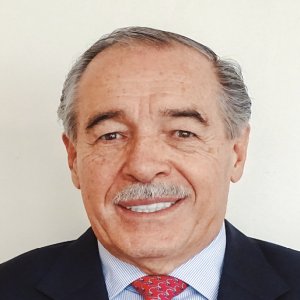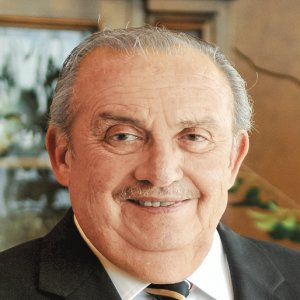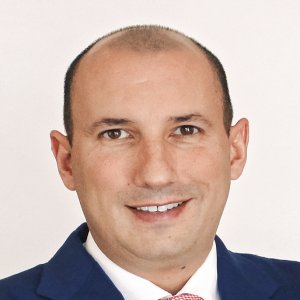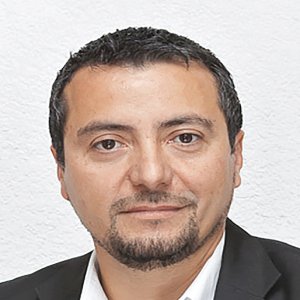A Helicopter for Every Mission

STORY INLINE POST
Q: What strategic role does Mexico play in Airbus Helicopters’ growth?
A: Airbus Helicopters is a world leader, offering the widest range of helicopters to suit all missions. Our company’s in- service fleet includes close to 12,000 helicopters operating across five continents and yet, it is extremely important for us to be close to our customers. Airbus Helicopters has offices in 21 countries and Mexico is a strategic country for both our commercial and industrial activities. From our Mexican offices we cover 24 countries in Central America, the Caribbean, and the northern part of South America, including Colombia, Venezuela, and Ecuador. In this region, Mexico is our most important country by volume of units and the number of operations in every sector. These 24 countries now operate 450 Airbus Helicopters, of which approximately 40 percent are flying in Mexico.
During Airbus Helicopters’ 35 years in Mexico we have focused on consolidating the company and increasing our activities. We now have over 300 employees in the country, 180 are based in Mexico City and 140 in our manufacturing plant in Queretaro. Our MRO in Mexico City provides much more than sales. It also offers maintenance, spare parts distribution and technical assistance. This 10,000m2 workshop provides much more than MRO services.
We modify helicopters before they start operating and install specific requirements such as Bambi Buckets for firefighting. Three years ago, seeking more opportunities to further develop our global supply chain, we decided to extend our footprint in the country by investing in the aeronautical manufacturing industry in Queretaro, where we produce high-technology aircraft components.
Q: What are the main characteristics of your helicopters and which MRO services are you developing to support them?
A: For a long time, we have been implementing a long- term strategy focused on not just being the largest but also the best helicopter provider in terms of quality, safety, client support and aftersales support. We have light single helicopters such as the popular H130 and H125, a family that has logged more than 5 million flight hours worldwide. Light twins like the H135 and the H145 are especially appreciated for emergency medical and police missions, the H175 is setting the standard for the super twins of high performance, comfort and cost effectiveness and the H225 in the heavy category is a global reference for offshore oil and gas as well as search and rescue missions.
All our models also are available for military customers. In 2015, civil aviation, namely private operators, accounted for half of Airbus Helicopters’ market. The other half was in the military sector, primarily governmental emergency services and search and rescue operations. The number of helicopters in the civil sector is larger than that in the defense sector but defense helicopters tend to be much larger and require more load capacity, thus in volume both sectors are roughly equal.
Concerning services, in 2015 we launched the HCare, a service support platform that offers our clients a quick response focused on helicopter operators’ needs. Operators have access through this platform to our technical support, including spare parts and technical publications. As part of HCare we now offer a three-year guarantee and 2,000 flight hours, another unique offering from Airbus Helicopters. The company also launched the web portal Keycopter to provide 24-hour access to all technical documentation that operators and technicians may need for aircraft maintenance.
Q: Which companies represent Airbus Helicopter's primary market in Mexico?
A: All our operators are important whether they have one helicopter or 10. One of our key operators, Transportes Aereos Pegaso, handles a variety of operations across the oil and gas and transportation industries with a fleet of over 30 Airbus helicopters, including the H130, H145 and H135 and will soon be the first operator in Latin America to incorporate the H175.
We work with several governmental organisms such as SEMAR, which uses three H225Ms and four Panthers, and they recently signed a contract for 10 more Panther helicopters which will we start to deliver this year. The Mexican air force operates 11 models of the H225M and we also are working with the General Coordination of Presidential Aerial Transport, which operates an important fleet of Super Puma and H225. Up to 180 Airbus helicopters are owned in Mexico by approximately 100 operators. Helicopters are a great solution to mobility problems, especially for corporate travel, in areas such as Mexico City with excessive traffic and difficult transportation.
Q: Why did Airbus Helicopters choose Queretaro as a manufacturing site instead of a larger cluster?
A: The state is in a strategic location, close to Mexico City and other critical locations. One of the many lures was Queretaro’s broad range of talented human capital. While technicians to engineers are present in other areas in the country, the proximity to UNAQ assured us there would be a continuous supply of qualified professionals. Moreover, the aerospace sector is growing rapidly in Queretaro due to the presence of many manufacturers and its administration is highly invested in the aerospace sector, so they are greatly involved in attracting and supporting new companies in the state. We have maintained close relationships with both administrations and are highly satisfied with their work.
In less than a year, we built 12,000m2 thanks to the company’s investment of US$100 million to produce components and parts for our helicopters, as well as for the Airbus A320 and A321. Depending on market trends, our plant in Queretaro could still increase its capacity by four or five times.
Q: What strategies has Airbus Helicopters implemented to support its suppliers, given the weak supply chain?
A: Queretaro, just like the other main clusters in the country, is home to a list of strong Tier 1 companies. However, it is true the network of Tier 2 and 3 companies is still lacking. OEMs entering the country, such as Airbus Helicopters, need immediate access to strong suppliers so we have been forced to use foreign companies to begin operations. Local supply is growing but it needs the support of the government, which should either promote Mexico to foreign companies or provide the conditions for the creation of local Tier 2 and 3 companies.
Q: What are Airbus Helicopter’s principal strategies for growth and innovation?
A: During 2015, we launched new helicopters such as the H175, of which approximately 100 helicopters have been sold to date. This year we began to commercialize the H160, a bi-turbine, medium-load helicopter in the US. Another recent development is the line manufacturing of emergency and loading doors for the Airbus A320 family, which is the most popular single-aisle aircraft worldwide. Demand is so great for this plane that we have orders for the next 10 years. Thus, our manufacturing processes have to be fast enough to supply all the parts for these airplanes.
Airbus predicts that over the next 20 years the demand for aircraft will exceed 30,000 units, an opinion shared by other OEMs and business analysts. For Airbus Helicopters, this means that our presence in Queretaro will provide work for the next few decades, even considering fluctuations in the economy and in the sector. Our plant in Queretaro is now offering certified products with high added value that will undoubtedly prevail over time.
Our goal is to reinforce our transformation plan in 2016, including quality and safety, client satisfaction, quality of services and cost policies. 2015 was a difficult year worldwide and Mexico has been overwhelmed as changes in oil prices have complicated the situation. In our opinion, structural measures introduced by the presidential administration will ameliorate these problems, as they will encourage competition and prove beneficial for the economy and thus, for Airbus Helicopters. 2016 and 2017 will be years of transition and evolution and we expect the economic situation to stabilize.























